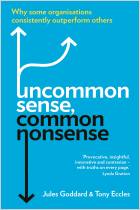Join getAbstract to access the summary!

Join getAbstract to access the summary!
David Osborne and Peter Plastrik
Banishing Bureaucracy
The Five Strategies for Reinventing Government
Perseus Books, 2006
What's inside?
Mired in the hierarchy? You can get rid of those bureaucratic blues and reinvent your organization.
Recommendation
In this sequel to his bestseller, Reinventing Government, David Osborne teams with Peter Plastrik to further explore the process of making public and governmental organizations more entrepreneurial by introducing businesslike practices. The authors focus on five strategies for fundamentally changing the way government works on local, state, regional and national levels, and give plenty of real-life global success stories. This organizational, economic and political tour de force is wonderfully written, and is never dry, academic or reliant on dense government gabble. In fact, it’s a page-turner. getAbstract recommends it to all concerned citizens.
Summary
About the Authors
David Osborne is the co-author of Reinventing Government and Laboratories of Democracy. He has written for the Washington Post and the New York Times Magazine, and served as an adviser to former U.S. Vice President Al Gore. Peter Plastrik was acting chief deputy of the Michigan Department of Commerce, and is now a consultant to public organizations and foundations.


















Comment on this summary